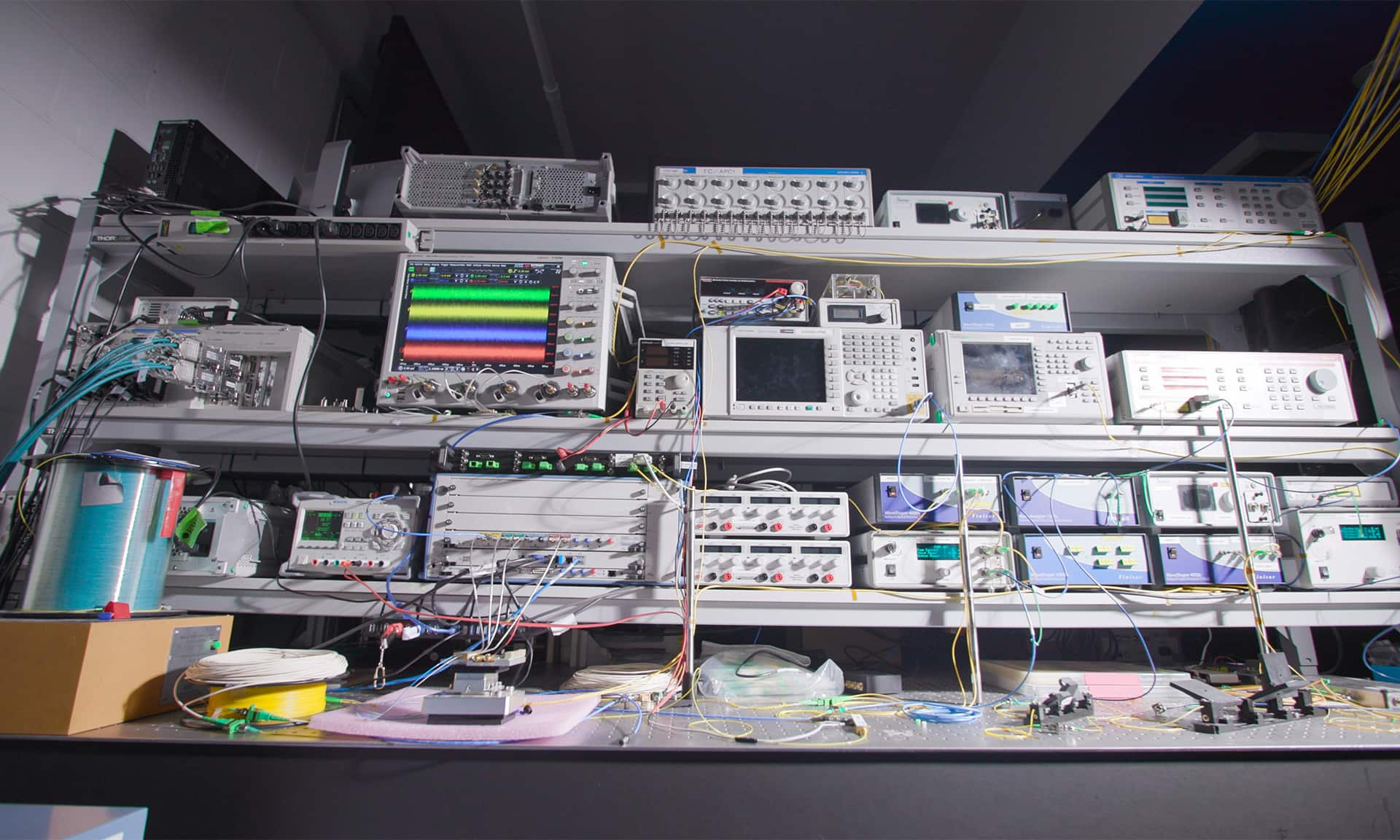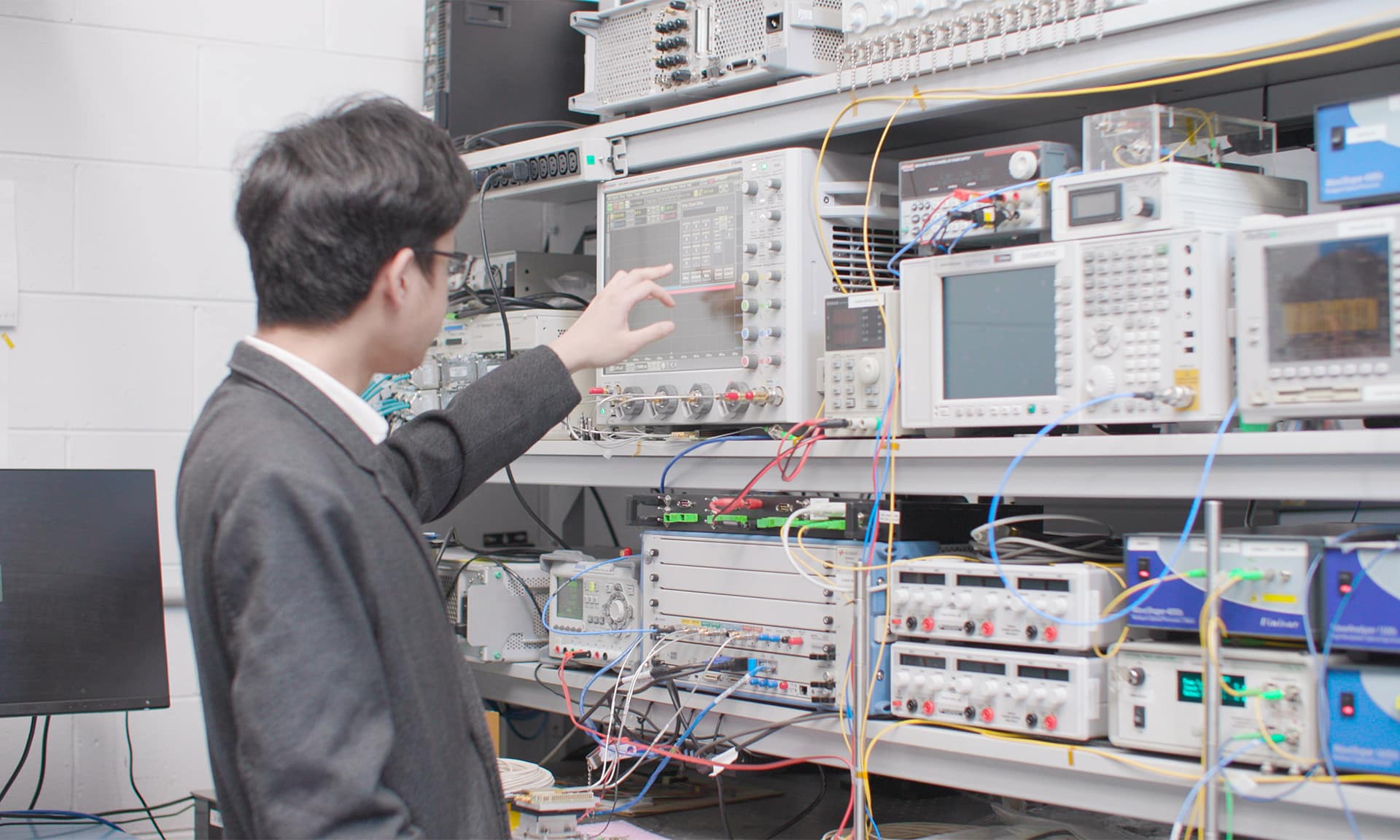
Given that internet traffic is growing at 25% per year, we need to increase high-speed internet access to everyone. A key challenge in getting data to more places, including remote places like those struck by natural hazards or war.
Two challenges remain in making these higher-speed connections more accessible: firstly, the microcomb – a device that replaces 80 or more separate lasers – needs to be efficient at operating with low noise when power is scarce and secondly, we need to miniaturise the remaining 80 on-bench components into a chip for easier installation.

To miniaturise these on-bench components onto the same optical chip, our team needed a material capable of completing many functions at once. InPAC has investigated thin film lithium niobate, a material that is fast and allows a lot of components to work in unison on a single chip.
To tackle the challenge of making a more energy-efficient chip capable of maintaining high data transfer rates, our PhD student, Chawaphon (Park) Prayoonyong, explored how to reduce the impact of noise on the microcomb so that it remained efficient, while still maintaining the high data transfer rates.
Our team at the Integrated Photonics and Applications Centre developed key components – particularly devices for putting data on light – on the thin-film lithium niobate material to shrink an entire benchtop’s worth of equipment onto a chip. This would allow future high-speed chips to be more easily installed into global internet infrastructure.
The team created an approach to reduce the noise on a microcomb by a factor of 10, so that the signal was clear even when power is scarce. This should allow microcombs to operate more efficiently than ever before.
This brings the team one step closer to making the world’s fastest internet more accessible in remote communities, places struck by natural disasters or war, and even space.
Senior Lecturer, Integrated Photonics and Applications Centre, RMIT
PhD student, Integrated Photonics and Applications Centre, RMIT


RMIT University acknowledges the people of the Woi wurrung and Boon wurrung language groups of the eastern Kulin Nation on whose unceded lands we conduct the business of the University. RMIT University respectfully acknowledges their Ancestors and Elders, past and present. RMIT also acknowledges the Traditional Custodians and their Ancestors of the lands and waters across Australia where we conduct our business - Artwork 'Sentient' by Hollie Johnson, Gunaikurnai and Monero Ngarigo.
Learn more about our commitment to Indigenous cultures